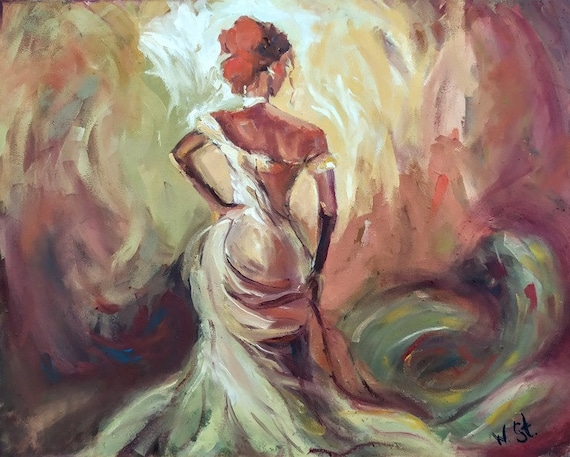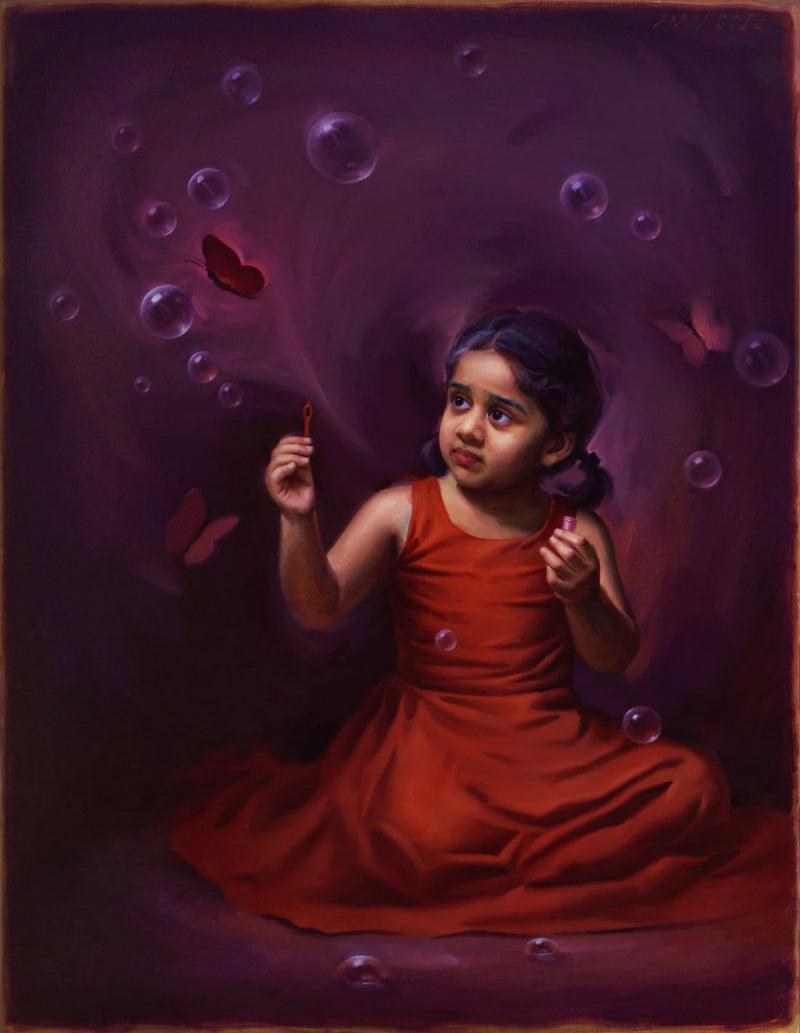Why Figurative Oil Painting Remains a Classic Choice for Artists
Why Figurative Oil Painting Remains a Classic Choice for Artists
Blog Article
The Role of Emotion and Expression in Metaphorical Oil Paint: A Thorough Analysis of Subject Matter and Structure
The interaction of emotion and expression in metaphorical oil painting acts as a critical lens where one can examine the detailed connection in between subject and make-up. Artists harness different methods, from shade choice to brushstroke dynamics, to grow psychological vibration within their jobs. This nuanced orchestration not just shapes viewer perception but also welcomes a deeper inquiry into exactly how these components coalesce to show the complexities of human experience. As we discover this rich surface, one should consider exactly how details instance research studies light up the wider effects of these imaginative options.
Recognizing Emotion in Art
Emotion in art functions as an effective channel for expression, enabling musicians to convey complicated feelings via their work. In figurative oil painting, this emotional depth is often portrayed through the depiction of the human figure, capturing the nuances of human experience. The option of subject, shade combination, and brushwork all add to the emotional resonance of a piece.
Artists often bring into play personal experiences, societal problems, or global motifs to stimulate sensations in the visitor. As an example, a portrait may reflect susceptability, while a dynamic figure in activity can symbolize flexibility or chaos. These psychological threads connect the audience to the artwork, cultivating a dialogue that goes beyond the visual medium.
Additionally, the interaction between light and darkness can amplify emotional intensity, directing the viewer's look and attracting attention to particular aspects within the structure. Making use of structure in oil painting better adds layers of complexity, inviting a tactile reaction that improves the emotional experience. Generally, comprehending feeling in art is important for valuing the nuances that define metaphorical oil painting, as it changes mere depiction right into a profound expedition of the human condition.
Trick Components of Make-up
In the realm of figurative oil painting, the make-up works as the underlying structure that arranges visual components and enhances the psychological narrative. Necessary components of composition include balance, contrast, focal point, and rhythm, each contributing to the general effect of the artwork.
Balance refers to the circulation of aesthetic weight within the painting, which can be attained through unbalanced or symmetrical arrangements. A healthy structure supplies security, allowing the customer to engage with the piece sympathetically - figurative oil painting. Contrast, on the various other hand, entails juxtaposing various elements, such as dark and light or cozy and amazing shades, to direct the customer's eye and evoke psychological feedbacks
The focal point is critical, as it directs interest to the most considerable part of the painting, commonly highlighting the emotional core of the narrative. Via techniques like color saturation or placement, artists can stress this area successfully. Rhythm pertains to the rep of elements, creating a feeling of movement and flow throughout the structure. By masterfully incorporating these essential elements, musicians can craft engaging and emotionally resonant figurative oil paints that mesmerize and engage their audience.
Topic and Its Effect
Topic plays a crucial role in metaphorical oil paint, as it not just functions as the structure for the narrative yet also forms the visitor's interpretation and psychological involvement with the artwork. The option of subject matter-- be it a singular number, a team dynamic, or a thematic depiction-- directly influences the emotional ambience conveyed to the audience.

For example, portraits often evoke personal links, exposing the ins and outs of human expression and character, while scenes depicting communal tasks can produce a sense of belonging or nostalgia. Furthermore, the social and historic context of the topic improves the audience's understanding, prompting deeper representations on social norms, worths, and the human problem.
Different subjects also generate differing degrees of involvement; a dramatic conflict illustrated with numbers in stress might elicit sensations of anxiety or empathy, while tranquil landscapes can invoke harmony and reflection. Eventually, the influence of topic in metaphorical oil paint is profound, as it offers as a channel for psychological vibration, assisting click over here the viewer's response and analysis, and promoting a connection between the art work and the observer. This interaction is essential for the successful communication of the artist's intent.
Methods for Stimulating Sensations
The effectiveness of figurative oil painting in sharing emotions is dramatically influenced by the techniques utilized by the musician. One of the most essential techniques is using shade concept, where the critical selection of hues can stimulate certain emotional actions. Warm shades, such as oranges and reds, often evoke feelings of interest or hostility, while cooler tones like blues and eco-friendlies often tend to stimulate calmness or unhappiness.
One more essential method is the control of light and shadow, recognized as chiaroscuro. This method boosts the three-dimensionality of numbers, creating dramatic contrasts that can heighten psychological deepness. The placement of light can guide audiences' feelings, highlighting details components of the composition.
Brushwork additionally plays a vital role; loose, meaningful strokes can communicate power and spontaneity, whereas smoother strategies may this content suggest harmony or accuracy. In addition, the plan of subjects within the composition can influence psychological impact. Close distance can suggest intimacy, while range may suggest seclusion.
Ultimately, the mix of these strategies allows artists to craft narratives that resonate with the visitor, transforming a simple aesthetic experience into an evocative emotional trip. - figurative oil painting

Study of Notable Works
Checking out significant jobs of figurative oil painting discloses how numerous strategies are employed to evoke powerful emotions. One excellent situation is Edvard Munch's "The Scream," where the distorted number and swirling background share existential fear. Munch's use color-- vibrant oranges and deep blues-- increases the psychological impact, showcasing exactly how scheme options can shape visitor experience.
One more significant work is Pablo Picasso's "Les Demoiselles d'Avignon." Here, fragmented types and strong brushstrokes mirror a turbulent psychological landscape, testing traditional representations of the women number. Picasso's innovative web composition not only records the customer's attention but additionally invites reflection on motifs of identification and sexuality.
In Addition, Frida Kahlo's "Both Fridas" offers a touching exploration of duality and self-identity. The different numbers, connected by a shared heart, exemplify Kahlo's psychological deepness and personal narrative. figurative oil painting. Her precise interest to detail and symbolic elements serve to engage audiences on a visceral level
These instance researches underscore the profound connection in between feeling and composition in metaphorical oil paint, exposing exactly how musicians harness strategy to connect complex feelings and narratives that reverberate throughout time and culture.

Conclusion
In verdict, the interplay of feeling and expression in figurative oil painting considerably enhances the audience's experience and interpretation of the artwork. With a mindful option of subject issue and compositional strategies, artists communicate extensive narratives that reverberate on both universal and individual degrees. The application of shade chiaroscuro, theory, and brushwork further magnifies emotional deepness, changing each canvas into an effective reflection of the intricacies of the human experience.
In figurative oil painting, this psychological depth is commonly represented via the depiction of the human number, recording the subtleties of human experience.Moreover, the interaction between light and darkness can enhance psychological strength, assisting the audience's gaze and attracting interest to specific elements within the structure. The usage of structure in oil painting further adds layers of intricacy, welcoming a tactile action that enhances the emotional experience.The focal factor is essential, as it routes attention to the most significant part of the painting, commonly highlighting the psychological core of the story. Inevitably, the effect of subject matter in figurative oil paint is extensive, as it offers as a conduit for emotional resonance, assisting the customer's action and interpretation, and fostering a link in between the art work and the onlooker.
Report this page